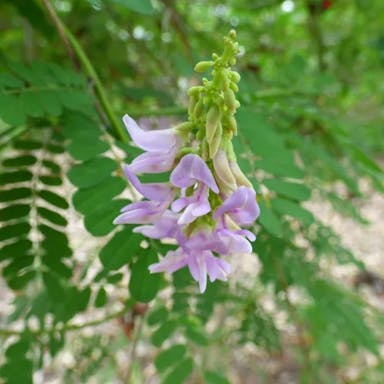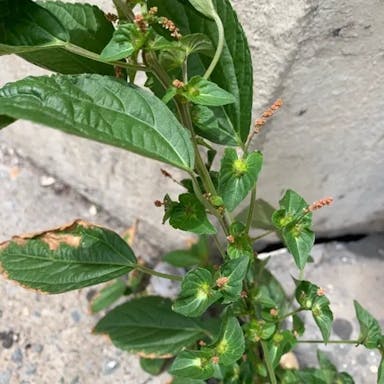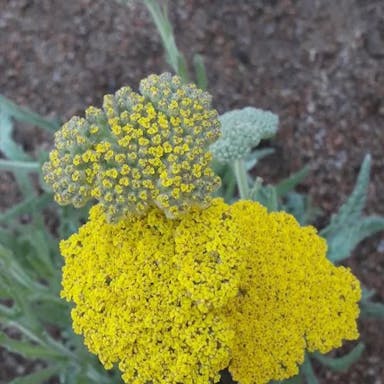Korean feather reed grass, scientifically known as Calamagrostis arundinacea, is a perennial grass species that belongs to the Poaceae family. Next sentence no change. This plant thrives by shooting up tall and thrusting upwards, maxing out at around six feet in stature. The verdant leaves are elongated and thin. Calamagrostis arundinacea generates feathers that pop up in either late spring or early summertime. The blossoms are typically a pale green hue, which gradually alters to a gilded brown as they ripen. These quill spikes incorporate an elegant and decorative quality to gardens and landscapes. As for its significance, Calamagrostis arundinacea is frequently linked with flexibility and adjustability. It is celebrated for its capacity to flourish in an assortment of soil sorts and developing conditions. This grass is additionally prized for its disintegration control properties, making it a well known decision for balancing out slopes and forestalling soil erosion. Regarding natural product, Calamagrostis arundinacea delivers little, unnoticeable seeds that are spread by wind. These seeds add to the plant's capacity to spread and colonize new regions. By and large, Calamagrostis arundinacea is an adaptable and appealing grass species that is moderately simple to develop and keep up. It is usually utilized in finishing and planting projects, adding surface and visual interest to open air spaces.
Korean feather reed grass
- Scientific name
- Calamagrostis arundinacea
Basic Information
- Poaceae Family Calamagrostis Genus Korean feather reed grass Species
- Poaceae > Calamagrostis > Calamagrostis arundinacea
- 83%
- The Completeness of This Encyclopedia
Please help us complete the encyclopedia, Terrarium is a encyclopedia service to be completed with everyone in the world. Currently, this page is 83% complete. For more information on how to contribute, please click here.
- Forb/herb
- Graminoid
- Height
- 100cm ~ 150cm
- Flower Color
- Leaf Color
- Anthesis
- summer
- Sunlight Exposure
Full Sun Long hours of sunlight from morning to afternoon Partial Shade A location in the shade of a tree or where either the morning or afternoon is shaded Full Shade A place where there is no direct sunlight
- Full Sun
- Hardiness Zones
This is an indicator to know to which zone each plant can winter. Knowing the zone of each plant gives you an idea of the cold temperature resistance when grown in the ground without a roof. 2: -42.7 to -40.0 3: -39.9 to -34.4 4: -34.3 to -28.9 5: -28.8 to -23.3 6: -23.2 to -17.8 7: -17.7 to -12.2 8: -12.1 to -6.7 9: -6.6 to -1.1 10: -1.0 to 4.4 11: 4.5 to 10.0
- 4-9
- Cold resistance
- Excellent
- Heat resistance
- Fair
- Habitat of origin
- Japan
- Growth Rate
- Normal
What is Korean feather reed grass (Calamagrostis arundinacea)?
What is Korean feather reed grass (Calamagrostis arundinacea)
Flower meaning
The commonly used language for Korean feather reed grass is without much documentation. However, we should note that context matters for flower meaning. Korean feather reed grass often relates to grace, elegance, and strength. It can symbolize adapting in environments, so works to show appreciation for resilience and adaptability. It also conveys calmness and tranquility. For example, sending Korean feather reed grass can thoughtfully express admiration for overcoming challenges gracefully. It reminds of resilience and strength. Also, gifting it can convey calmness and serenity. It can meaningfully offer peace in stress or uncertainty. We should know flower language is subjective and varies by culture.
Calendar of Korean feather reed grass (Calamagrostis arundinacea)
Calendar
Korean feather reed grass, scientifically known as Calamagrostis brachytricha, is a perennial grass native to Korea and China. This gorgeous grass usually blooms from late summer into early fall. The plumes are at their peak in August and September. Blooming lasts a few weeks. To keep the flowers coming, give it full sun, well-drained soil and regular water. Also cut off spent blooms. This plant adds beauty to gardens in late summer and fall. Its soft, feathery plumes make a stunning display.
How to grow Korean feather reed grass (Calamagrostis arundinacea)
Watering
Korean feather reed grass demands full irrigation to prosper. How often watering must occur depends on time of year and earth states. From spring through fall, the full growing season, once per seven days deeply water the grass. That enables water to enter the earth and reach the plant's roots, encouraging healthy maturation. However, ensure the earth drains well to prohibit waterlogging, possibly resulting in root decay. In winter, when the grass lies dormant, reduce watering to once per 14-21 days, as the plant needs less moisture then. Critical to observe the earth dampness and adapt watering frequency correctly. Overwatering must be avoided, as it can render the grass prone to diseases.
Soil and Fertilizer
Korean feather reed grass, scientifically known as Calamagrostis brachytricha, thrives in well-drained soil with a pH range of 5.5 to 7.5. However, can lead to root rot. Apply a balanced slow-release fertilizer with an NPK ratio. This will provide the necessary nutrients for healthy foliage and flower development. The fertilizer should be applied at a rate of 1 pound. It is important to evenly distribute the fertilizer around the base of the plant, avoiding direct contact with the foliage. Additional applications of a water-soluble fertilizer with a higher nitrogen content, such as a 20-10-10 or 24-8-16 formula, can be applied every 4-6 weeks. This will promote vigorous growth and lush foliage. Regular soil testing is recommended to monitor the pH and nutrient levels in the soil. Adjustments can be made accordingly to maintain optimal conditions for Korean feather reed grass.
Sunlight and Place
Korean feather reed grass has the typical name Calamagrostis brachytricha. This perennial grass likes sunlight. However, extreme warm weather can harm its progress. So give some shade in summer. This plant prefers cool between 15°C and 24°C. When it's winter, keep the dried leaves. They look good and protect the crown. This grass needs good drainage. Use it in groups or alone. Note it wants 6 hours of direct sun daily. This plant adds feel and movement to gardens. Overall, this attractive grass needs: - Full to partial sunlight - Cool summer temperatures - Winter protection - Good drainage - Plenty of sunshine
Advanced Information of Korean feather reed grass (Calamagrostis arundinacea)
Pruning
Korean feather reed grass, scientifically known as Calamagrostis brachytricha, benefits from time to time cutting back to stay healthy and nice looking. Trimming old or damaged leaves, help new growth, and keep the plant under control. Do it late winter or early spring before new leaves come out. Use clean scissors to cut the grass to 2 or 3 in. This makes fresh growth not get tall. Take away cuttings so diseases or bugs do not spread. Also cut back the shape sometimes in spring or fall to 6-8 in. high. Follow this to help the beautiful grass do well.
Planting and Harvest
Korean feather reed grass, also known as Calamagrostis brachytricha, is a grasses that be potted or planted in the ground. When potting this plant, choose a container that is at least 12 inches in diameter and has drainage holes. Fill the pot with a well-draining potting mix, leaving enough space for the plant's root ball. Gently remove the plant from its nursery container and place it in the pot, making sure the top of the root ball is level with the soil surface. Backfill the pot with soil, firming it gently around the roots. Water the plant thoroughly after potting and keep the soil consistently moist, but not waterlogged. If you prefer to plant Korean feather reed grass in the ground, choose a location with full sun to partial shade and well-draining soil. Dig a hole that is slightly larger than the root ball and place the plant in the hole, making sure the top of the root ball is level with the soil surface. Backfill the hole with soil, firming it gently around the roots. Water the plant thoroughly after planting and continue to water regularly until it becomes established. To repot Korean feather reed grass, follow the same procedure as potting. It is recommended to repot every 2-3 years to prevent the plant from becoming root-bound. Mishowing, or misplacement, of Korean feather reed grass is not applicable as it refers to the incorrect display or arrangement of plants, which is not relevant to potting or planting procedures.
Propagation
Korean feather reed grass can be propagated through various methods such as sowing seeds, division, cuttings, and leaf cuttings. To propagate through sowing seeds, collect mature seeds from the plant and sow them in a well-draining soil mix. Keep the soil moist and place the container in a warm and sunny location. Germination usually takes around 2-3 weeks. For division, dig up the mature plant and carefully separate the clumps into smaller sections, ensuring each section has roots and shoots. Replant the divisions in well-prepared soil, keeping them adequately watered until established. To propagate through cuttings, take stem cuttings from the plant, ensuring they have at least two nodes. Remove the lower leaves and dip the cut end in a rooting hormone. Plant the cuttings in a well-draining soil medium and provide a warm and humid growing environment until roots form. Leaf cuttings can also be utilized for propagation. Remove healthy leaves and cut them into sections, ensuring each section contains a vein. Place the leaf sections in a porous potting mixture, maintaining moisture and warmth. Roots and new shoots will emerge from the leaf sections. Harvesting can occur when the plant reaches maturity and the desired plant parts, like seeds or divisions, are prepared for use in propagation.
Pests and Diseases
Korean feather reed grass, a popular ornamental grass, is susceptible to several pests and diseases. For division spreads rapidly in warm, moist conditions and can be controlled with sanitation and chemical sprays. Another consuming pest damages the leaves and weakens the lower portions of the stems. A fungal infection appears as colorful eruptions on the foliage while another causes darkened blemishes on leaves. These conditions lead to discolored or prematurely dropped leaves and an overall decline in vitality. To stop pests, consistent monitoring and early detection are key. Natural soaps or oils can control small insects while barriers or targeted applications may be required for larger insects. Appropriate cleanliness like removing and destroying infected plant parts can prevent the spread of fungi. Allowing air flow and avoiding overhead hydration also reduces fungal hazards. The withering of this ornamental grass may be caused by drought, nutrient shortages, or improper care. It is vital to ensure the plant has draining earth and enough hydration during dry times. Standard replenishment with a balanced mix can prevent shortages. Following best practices for watering, sunlight and care will also contribute to the overall welfare and lessen the chances of withering.
Habitat of Korean feather reed grass (Calamagrostis arundinacea)
Habitat
Toxicity of Korean feather reed grass (Calamagrostis arundinacea)
Health Benefits
- edible
- Inedible
- Toxic
- No toxicity
NO DATA
Toxic for dogs and cats
NO DATA
Q&A of Korean feather reed grass (Calamagrostis arundinacea)
- Is there a recommended way to choose Korean feather reed grass?
Korean feather reed grass is scientifically known as Calamagrostis brachytricha. When selecting, consider height, color, growth habit. 'Overdam' is variegated with green and white striped leaves, reaching 2-3 feet. 'Karl Foerster' is upright, growing to 5 feet, with feathery plumes. 'Avalanche' is compact, reaching 2-3 feet, with green leaves and white plumes. When purchasing seeds, look for fresh, high-quality from reputable suppliers. Ensure properly stored with high germination rate. When buying seedlings, choose healthy plants with well-developed root systems. Avoid plants with yellowing or damaged leaves. It is also important to consider specific growing conditions required, such as sun to partial shade and well-drained soil.
0
0












